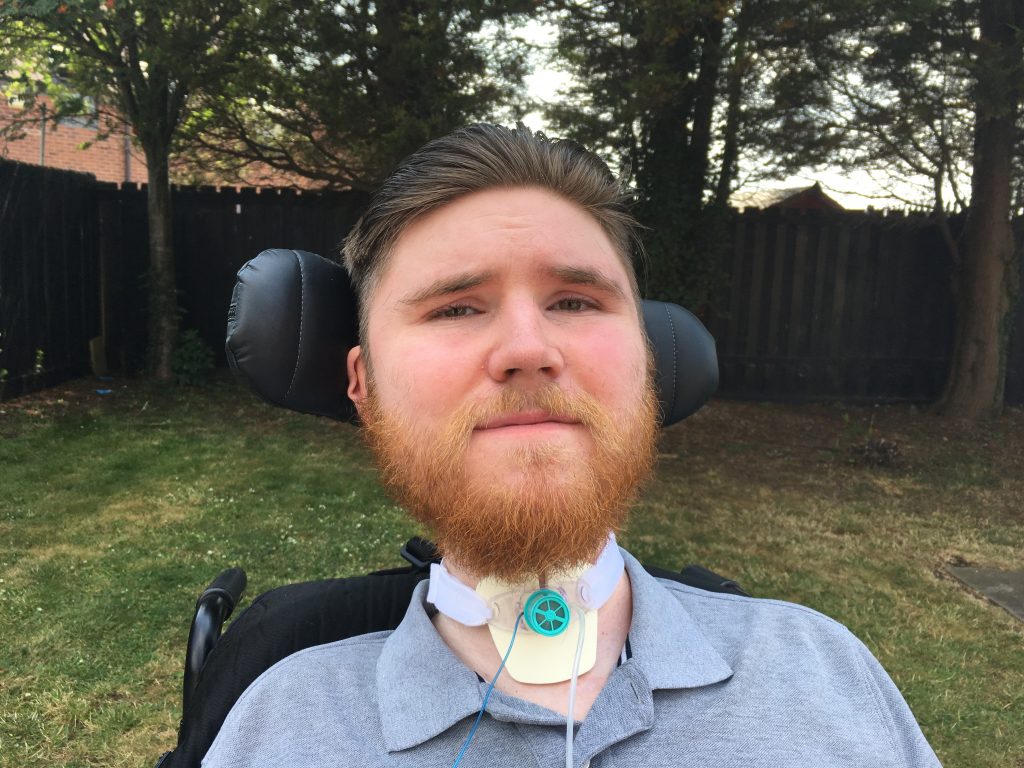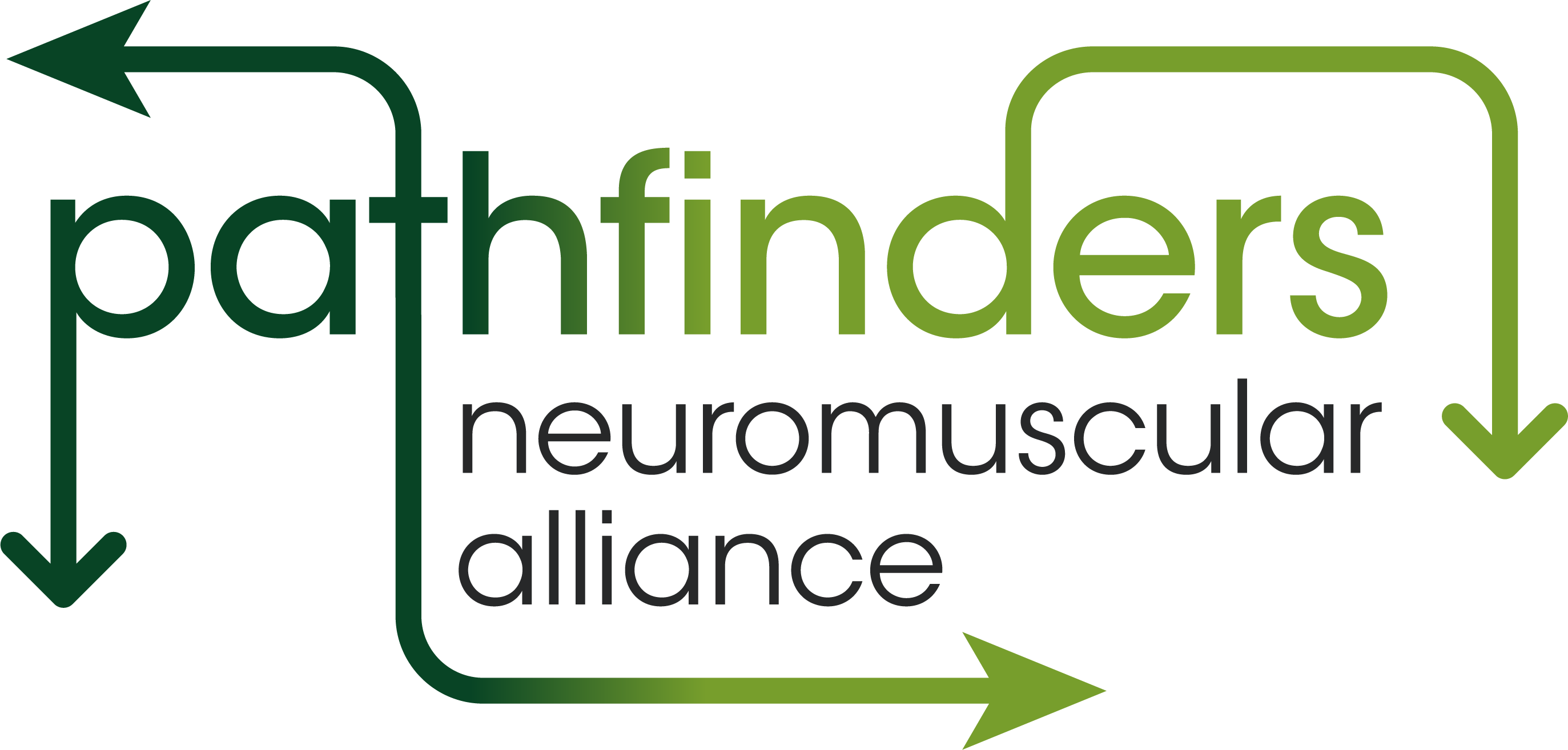
This is my experience with getting a tracheostomy. Until now, my health during my life with Duchenne had been pretty dope. I’ve never had any real problems apart from the obvious. That changed a bit early last year when I had a bad chest infection, where I had to have a trache fitted. A trache (or tracheostomy) is a small hole in your neck in which a doctor will insert a tube into your windpipe (trachea). This helps you breathe and helps clear mucus from your chest through suctioning if your cough is weak. I’ve had the trache for over a year now. Your life can still carry on perfectly fine with a tracheostomy, but one or two things might be different.
I am tireder
This for me is the biggest thing I’ve noticed. I do feel tired more. This is normally through needing suction throughout the day to clear my chest. When you need suction, someone passes a long tube (suction catheter) down your windpipe. A suction machine brings mucus up. The tube stays down for up to 10 seconds, and it’s harder to breathe the longer the tube is there. It can take a few seconds to get your breath back, because the tube also suctions some of the air out.
If you have a lot of suctions a day, it gets tiring. It’s like running a marathon every day.
I don’t sleep a lot at night either. Most nights I wake up needing suction. Because I need it a few times per night my sleep is broken and I am more tired the next day. I’ve found that some days you need to rest more, and it doesn’t hurt to stay in bed on the odd day.
I can still eat properly with a tracheostomy
When you first get a tracheostomy, your doctor may tell you that you shouldn’t eat and might give you a feeding tube. Normally when you swallow, your throat closes off the entrance to your windpipe to prevent you swallowing food and drink into your windpipe. With a trache, it doesn’t completely close off. This means there’s a higher risk of food going down the wrong way into your lungs. This is called aspiration, which can lead to pneumonia.
Sometimes you’ll cough while you’re eating, which is a sign of food going down the wrong way. If it gets near your windpipe it will irritate it and force you to cough to move the food away from it. A doctor will tell you the risks and what could happen if food goes down the wrong way. It’s your choice to eat though. In the first few weeks of having the trache a speech therapist assessed me to see how effective my swallowing was. They recommend that you only eat soft food that’s easier and safer to swallow, like soup or mashed potato. Pureeing your meals is another option.
I’ve got no problem eating soft food because that’s how it comes. I draw the line at pureeing proper meals though, because to me it would be like eating baby food. I want to enjoy physically eating something, and having it pureed takes that away, so I would rather not eat. They’ll tell you foods to avoid that are harder to swallow or chew, like rice as it makes you cough more. I can eat rice even though I shouldn’t be able to, so I think everyone’s different. Some might struggle with certain food that other people can manage fine. Good news is, you can definitely still eat and drink properly the same as before with a tracheostomy. There’s a couple of things to watch out for though.
I’ve found it takes longer to chew food. It feels to me like an automatic response from the body. Because I find swallowing harder, I have to chew more. As it takes longer, your food can go cold quicker too which can put you off finishing it.
You do have to be a bit more careful, but it doesn’t stop you from eating. It’s safer to eat slower and chew food more. If coughing is making you struggle to eat a meal, it’s better to take a few minutes or stop eating it. If there are certain foods that you have trouble eating, it’s ok to avoid them.
I shouldn’t try to talk without a speaking valve in the tracheostomy
Not unless you want to be 10 years behind the conversation. It’s really not that bad, but it’s harder to talk with a tracheostomy because the air you breathe doesn’t pass over your vocal cords. It makes you talk slower and quieter making it harder to keep up with conversations. A speaking valve helps a lot. It’s a little green cap that sits on the end of the trache. It has a filter that closes when you breathe out, forcing the air over your vocal cords and out through your nose & mouth. It’s better to use this all the time you want to speak because people can understand you better.
Getting up takes longer
You have to clean the area around the trache daily, change the dressing that covers the area and replace the straps holding it in place. This will add more time to your morning routine. When rolling to get dressed you will loosen mucus in your chest. You then need to suction to get rid of it. Then you have to stop, sit up and do the suction. This can happen a few times, so this makes it longer to get up too. When you’re finally dressed, up and ready to go out:
I have to carry more stuff around
You probably won’t carry lightly anymore. I have to take a suction machine wherever I go, along with suction catheters and gloves. I also take a ventilator, cough assist, and ambi-bag & an emergency bag with me. (This is just my personal experience, though. Some of you may already carry some or all of these things. I’ve only had to start taking these with me since having the trache).
Changing the tracheostomy
Every six weeks your trache tube will need changing. A nurse will usually come to your house for this. All they do is take the old tube out and insert the new one. It’s securely held in place with velcro straps around your neck, with a dressing covering the area. It can be a bit painful but most of the time it’s over pretty quickly. It might take a few attempts to push the tube in place but it will go in. Sometimes you’ll see blood coming up when you do suction afterwards; that’s just trauma from aggravating the area and it’s normal. It’s a hole that is constantly trying to heal, so it will cause trauma changing the tube.
Getting back to normal
I was in hospital with a chest infection for quite a while so I had a lot of time to get used to having the tracheostomy when I couldn’t do anything else. It felt like ages so I wanted to get back to normal straight away when I got out. I was drinking JD and coke the same day I left hospital and went out the next day. It can take a few months to get used to a trache though. You just have to go at your own pace while you adjust, but it’s possible to carry on as you did before.
Bobby has Duchenne Muscular Dystrophy and is a volunteer for Pathfinders


